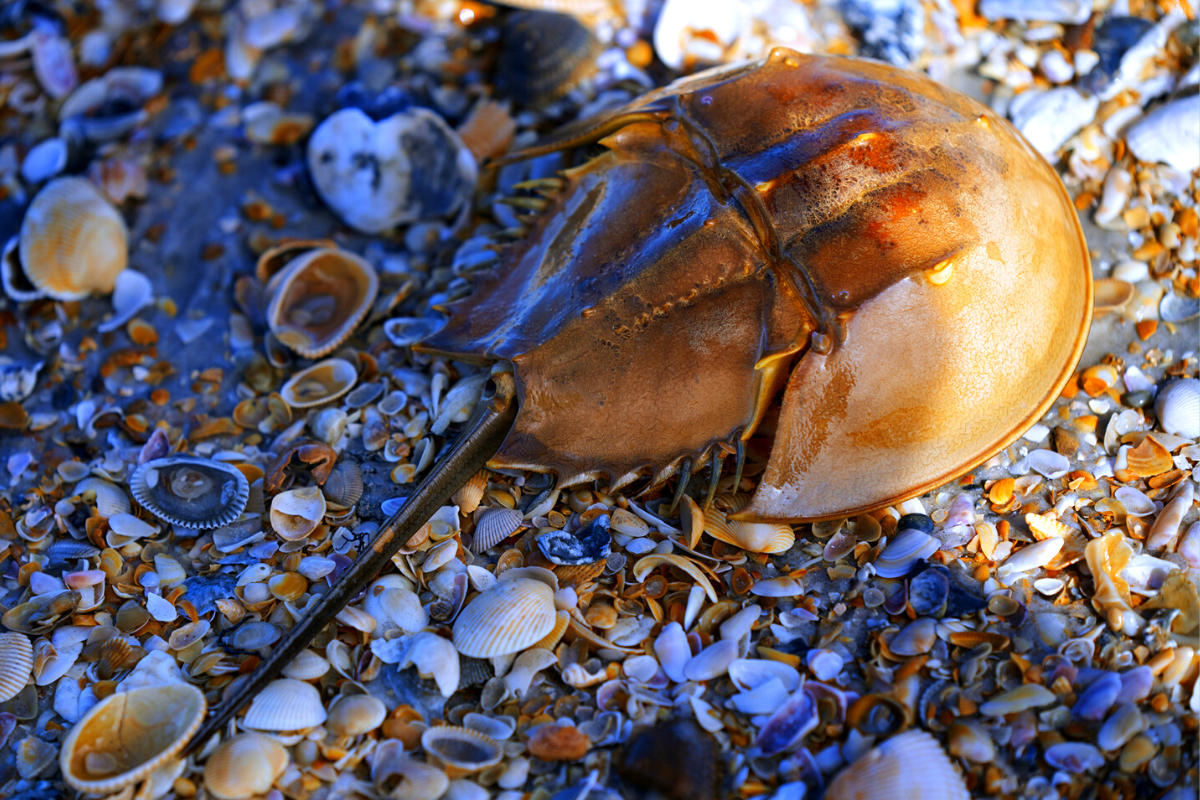Friends of Animals has petitioned the U.S. Secretary of Commerce to list the Atlantic horseshoe crab under the Endangered Species Act (ESA).
“People continue to exploit horseshoe crabs at an alarming rate, and existing laws are not adequate to protect them. In addition, climate change and resulting sea level rises threaten their habitat,” said Jennifer Best, director of Friends of Animals Wildlife Law Program. “All these factors demonstrate the necessity of listing this dominant species under the ESA.”
The petition points out that as many as 2 million horseshoe crabs were killed annually between 1850 and 1920 for use as fertilizer and livestock feed. Between 1920 and 1960, this destructive practice slowed before ceasing entirely due to population declines. However, it didn’t take long for humans to further commodify Atlantic horseshoe crabs. In the 1970s, scientists discovered that the animals’ bright blue blood clots when exposed to harmful bacterial endotoxins, and in the 1980s they began using horseshoe crab blood to develop the Limulus amoebocyte test (LAL) to detect endotoxins in vaccines, medications, needles and biomedical devices.
Bleeding labs, which drain horseshoe crabs of about 30 percent of their blood and turn that blood into LAL, collected 637,029 horseshoe crabs in 2019, 30 percent more than they took the year before. While the crabs are returned to the water, at least 15 percent—or 95,554—die. Some research puts that mortality figure as high as 30 percent.
The killing of horseshoe crabs ramped up in the ‘90s when fishers started capturing them and chopping them up for bait for eel and whelk. They focused on mature, egg-bearing females due to their larger size and because the eggs could be used as additional bait.
“Because horseshoe crabs can take 10 years to mature, egg-bearing females are critical to species reproduction, and their rampant killing has had lasting effects on horseshoe crab egg abundance in areas where heavy killing occurred,” Best said.
If horseshoe crabs are listed as endangered under the ESA, they could not be killed without a permit.
Horseshoe crab egg abundance is important not only as an indication of species population health, but also because horseshoe crab eggs are a vital food source for the red knot, a migratory shorebird currently listed as threatened. In 1998, partially in response to concerns that declining horseshoe crab numbers would negatively impact the red knot, the Atlantic State Marine Fisheries Commission adopted a Horseshoe Crab Fisheries Management Plan (FMP).
Although the FMP resulted in decreased numbers of crabs killed as bait, more than 700,000 crabs were killed for that purpose in 2021.
FoA’s petition states that the main reason FMP fails to adequately protect the Atlantic horseshoe crab is it is not intended to do so; rather FMP is clear that the ASMFC considers the horseshoe crab a “resource” that must be preserved only to the extent that it remains available “for continued use by” the public, listed species, and industry.
“The FMP focuses more on crabs killed than crabs left in the ocean. This flawed approach to crab conservation cannot ensure its survival,” Best said. “When the Atlantic horseshoe crab’s interests don’t align with those of industry or with the red knot, the crab is sure to lose.”

